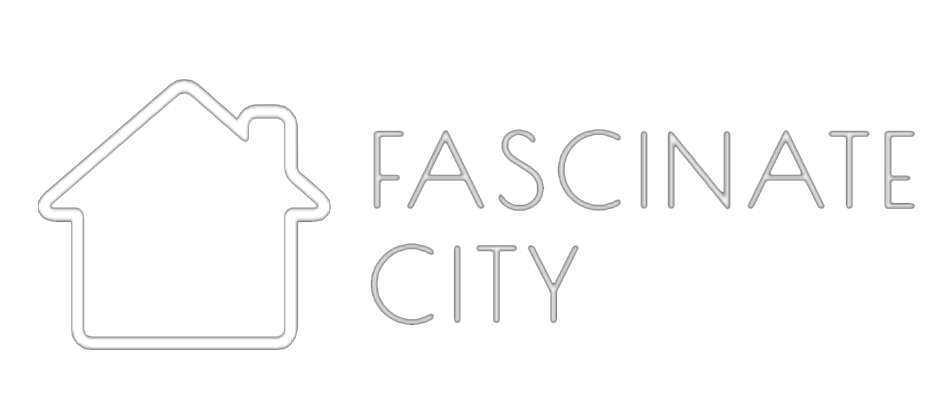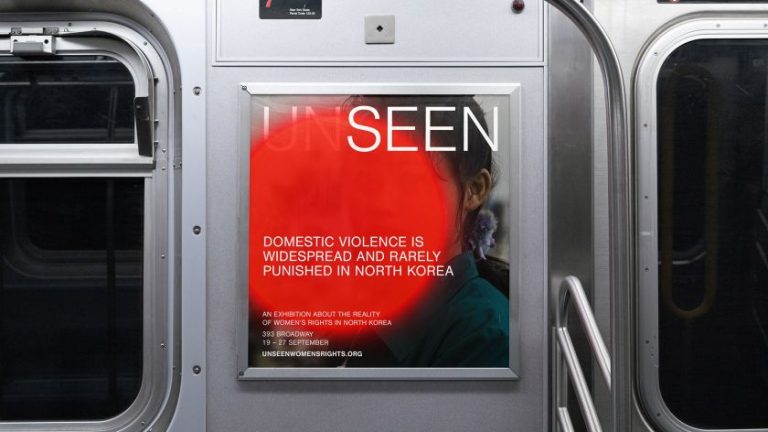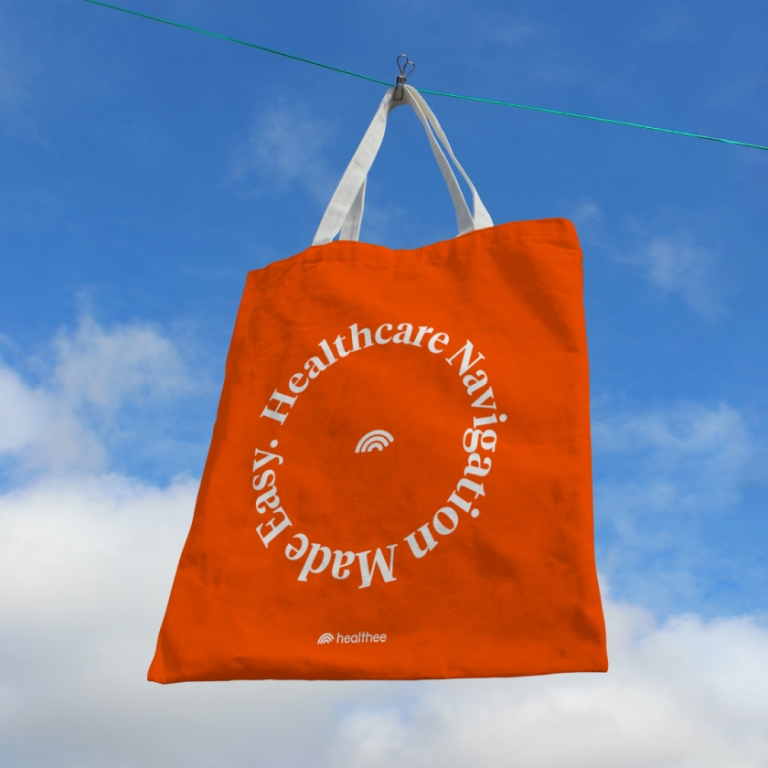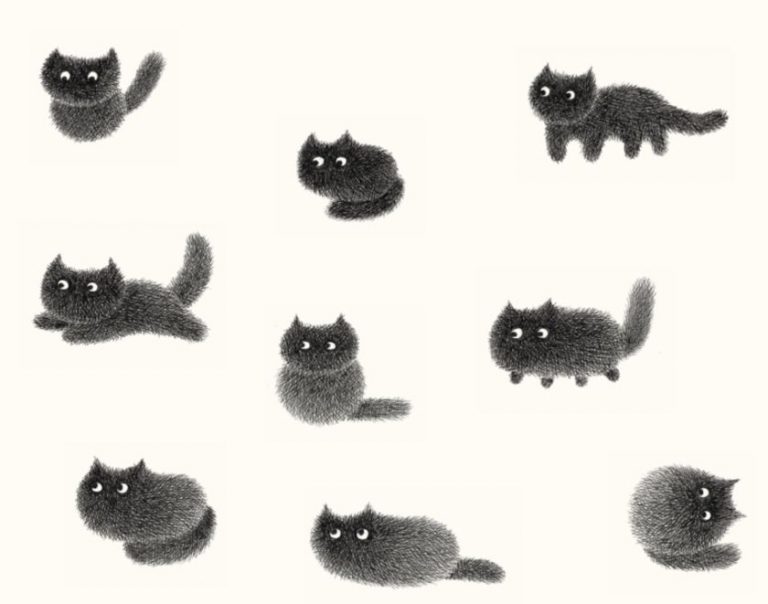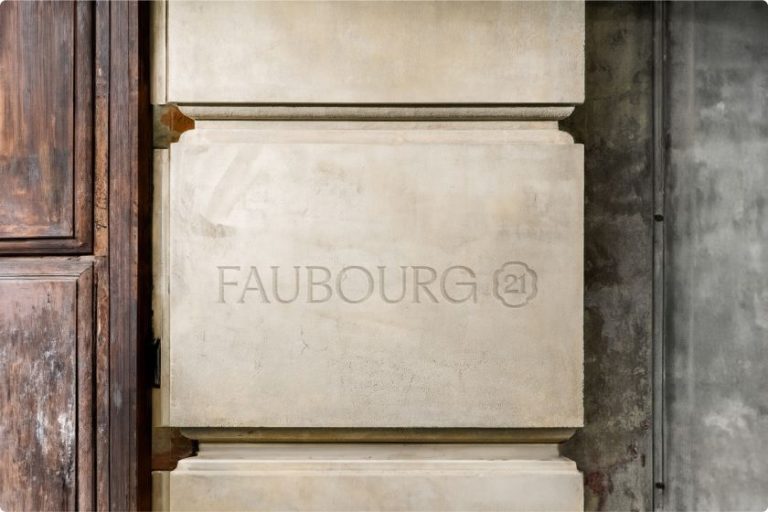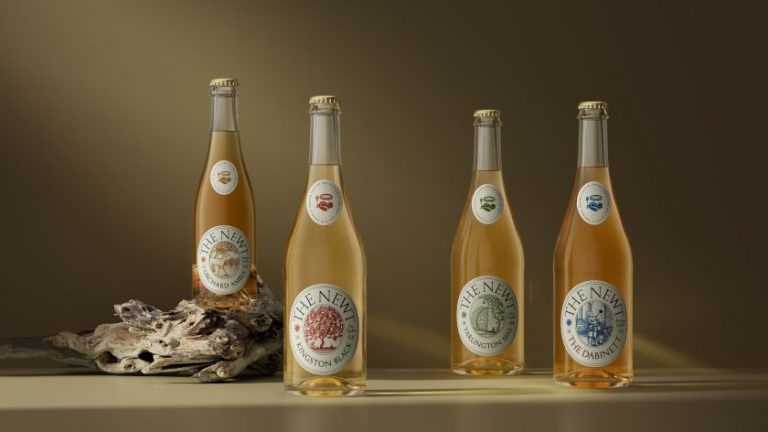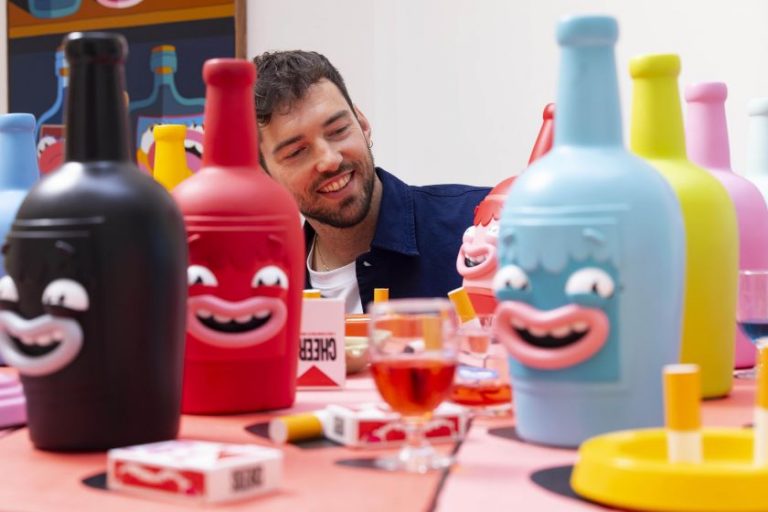From bold type and juicy colourways to signage made from offcuts, Crown Creative’s branding for Piquette celebrates imperfection with polish. It captures the charm of Oregon’s natural wine scene and the spirit of slow, soulful hospitality.
Set among the vine-covered hills of McMinnville, Oregon, Piquette is no ordinary boutique hotel. Named after a humble French table wine, the property is steeped in local character, serving up natural charm with a side of irreverent flair.
When it came to building a brand identity to match, Piquette’s founders turned to Crown Creative to bring their vision to life, enlisting the studio for art direction, branding, signage and strategy. With a philosophy rooted in hospitality done well (but never too seriously), Crown Creative was tasked with crafting an identity that balances polish with playfulness.
“Piquette, in its literal translation, refers to a French wine of low quality,” explains Lili Phillips, senior graphic designer at Crown Creative. “Our brand identity and ethos proudly embrace this spirit of imperfection, reflecting the client’s mantra: ‘We don’t take ourselves too seriously, except when it comes to hospitality.'”
This blend of high standards and low-key charm informs every design decision, from a cheeky tone of voice to unconventional touchpoints throughout the space. Typography plays a central role in anchoring the brand’s sense of place. Crown Creative opted for LS Adelia as the primary typeface, described as a flare serif inspired by Nordic arts and culture of the early 1900s.
“With romantic ligatures and organic characteristics, the type pays homage to both the iconic Alpine Avenue signage and the year in which Georgia Mason was born — a visionary botanist from Oregon — as well as the name of the existing house on the property,” says Phillips.
The all-caps, centred wordmark is a direct reference to Mason’s 1982 self-published book, Plants of Wet Moist Habitats in and Around Eugene, Oregon. It reinforces a layered connection between past and present, nature and narrative.
That local influence also spills into the colour palette. “Our palette was inspired directly by Oregon’s picturesque wine country and Piquette’s roots,” Phillips explains. “It feels grounded and natural, but with a confidence that sets us apart.”
Each hue tells a tactile story — Amphora, a warm burnt orange, nods to the clay vessels used in traditional winemaking, while Pomace, a rich purple, echoes the hue of pressed grape skins and stems. It’s branding you can practically taste.
The identity has been carefully built to stretch and flex across physical and digital touchpoints, from room keys to menus to merch. Phillips says: “Of course, there are foundational grids and guidelines to hold things together, but Piquette’s spirit lies in its playfulness and in falling slightly off the mark… and owning it.”
That ethos carries through even in the signage, which uses offcuts and leftover materials from local makers. “The interior wayfinding, for example, is crafted from cut-offs and unused pieces from local artists and makers to create something entirely fresh and unique. It’s about being resourceful, taking what’s overlooked, and giving it a new life. That’s Piquette,” she adds.
While natural wine culture has become known for its irreverent design codes, Piquette’s visual identity carves its own confident, curated, and characterful niche. “Just like in natural winemaking, it was important to us that the hand of the maker was felt in Piquette’s touchpoints without falling into some of the expected cues so often seen in natural wine identity,” says Phillips. “Ultimately, Piquette is a hotel brand that thrives on contrast; structure meets spontaneity; precision meets play; curation meets cheekiness.”
Illustration plays a key role in that dynamic balance. Crown Creative commissioned artist Zack Rosebrugh to create a suite of bespoke illustrations capturing the local people and culture.
These appear across hotel collateral and promotional material, adding a layer of levity and warmth. “These illustrations and loose details are then paired with beautiful, confident typography to establish a visual language that feels expressive yet refined,” says Phillips.
Collaboration was at the heart of the project, and its dynamic continues even after launch. “It’s rare to work on something that naturally gives you this much room to play with a client who you just click with,” Phillips reflects. “Their ethos set the tone from the start: open-minded, curious, and unafraid to break convention. That clarity shaped the brand positioning, and the positioning shaped everything that followed.”
The result is a brand that doesn’t just speak to its surroundings but feels woven into the fabric of the place, much like a great bottle of local wine. “It’s proof that the brand is continuing to grow in the most organic, collaborative way,” says Phillips.
In other words, it is perfectly fermented, with just the right amount of fizz.
